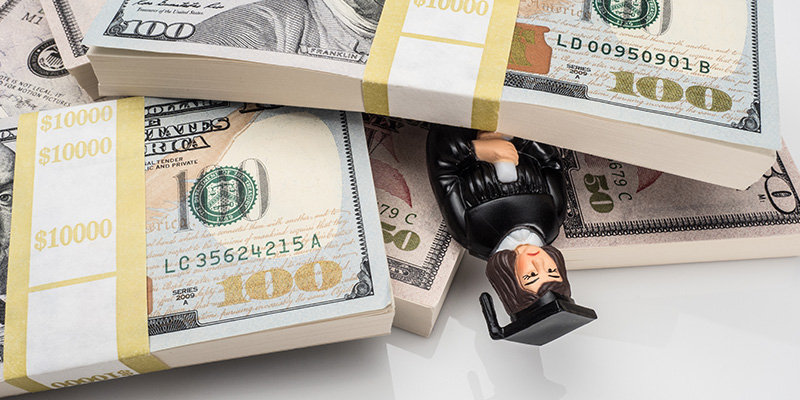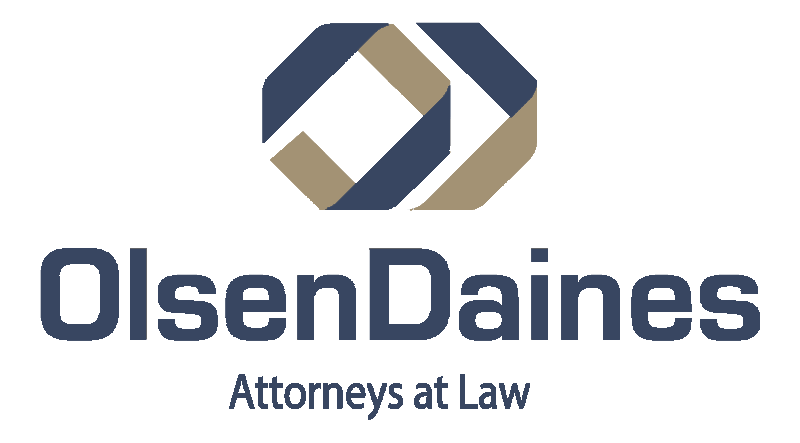
Any debt relief is good relief for those who owe on their student loans, including forgiveness programs and bankruptcy. Federal student loan payments were paused starting in March 2020, and years later, the U.S. Department of Education announced that (most) borrowers had to resume payments as of October 2023.
Though the decision to continue student loan payments was disappointing for borrowers across the country, that doesn’t mean it’s time to despair. Historically, student loans have been considered non-dischargeable through bankruptcy. However, thanks to the Department of Education’s recent policy changes student loan discharge is more accessible through bankruptcy than ever before.
If you’re in this situation, there’s still some hope. Many people are unaware that there are several different ways they can achieve student loan forgiveness. In these complex times, you may find yourself in need of a student loan legal counsel from OlsenDaines to help you navigate through the red tape and explain all of your options to you. At the very least, we can give you a better idea of the options, including filing for bankruptcy.
Am I Eligible for Student Loan Forgiveness Programs?
Eligibility for student loan forgiveness programs can vary depending on factors such as your profession, income, loan type, and repayment history. Public Service Loan Forgiveness (PSLF), Teacher Loan Forgiveness, and Income-Driven Repayment (IDR) plans are just a few examples of the options out there.
Public Service Loan Forgiveness
To provide relief for full-time employees of government services or non-profit organizations, the federal government also offers Public Service Loan Forgiveness (PSLF). This allows the student loans to be forgiven after 120 qualifying payments, or just ten years while working for a qualifying public service organization. Some examples of qualifying employers include:
- Military Service
- Public Health
- Public Education
- Social work
- Early Childhood Education
- 501(c)(3) Tax-Exempt Organizations
It’s important to note that the 120 payments do not need to be consecutive, but you must fill out paperwork to delineate which payments contribute toward your forgiveness plan. Additionally, not all employers qualify for PSLF.
What Is an Income-Driven Repayment Plan (IDR)?
Income-driven repayment (IDR) plans are designed to help individuals who have student loan payments that are disproportionately high compared to their income. These plans calculate your required payments based on how much you earn annually rather than how much you owe. As a result, your payments could be lower and much more affordable than standard repayment options.
Income-driven repayment plans (IDRs) use your family size and discretionary income to determine an appropriate monthly payment amount. For many people, the IDR can significantly lower monthly payment amounts. IDR plans offer complete loan cancellation after making a certain number of qualifying payments — typically over the course of 20 or 25 years.
Borrowers may qualify for one of these types of IDR plans:
| Repayment Plan | % of Discretionary Income | Repayment Period |
| Saving on a Valuable Education (SAVE) Plan | 10% | 20 years (for only undergraduate loans) 25 years (if you have any graduate or professional loans) |
| Pay As You Earn (PAYE) | 10% | 20 years |
| Income-Based Repayment (IBR) Plan (first borrowed after July 1, 2014) | 10% | 20 years |
| Income-Based Repayment (IBR) Plan (borrowed before July 1, 2014) | 10% | 25 years |
| Income-Contingent Repayment (ICR) | 10% | 25 years |
The main differences between these plans are the percentage of your discretionary income required in each monthly payment and the amount of time you must make payments before qualifying for forgiveness.
Saving on a Valuable Education (SAVE) Plan
In addition to the IDR plans above, the Biden Administration has also announced a new plan called the Saving on a Valuable Education (SAVE) plan. This plan has the lowest monthly payment of any available repayment option and offers a number of other benefits to make the debt more manageable. SAVE is rolling out in the summer of 2023 and will go into full effect in July 2024.
Do FFELP Loans Qualify?
Not exactly. Though Federal Family Education Loan Program (FFELP) loans can benefit from these updates to student loan forgiveness, borrowers must apply to consolidate any commercially held loans into a Direct Consolidation Loan to qualify.
FFELP student loans are privately owned but federally backed. Most loans taken out prior to 2010 are FFELP loans, though your service provider can help you determine which type of loan you have if you aren’t certain.
To truly understand if you qualify for any of these programs, it’s highly recommended that you consult with a knowledgeable student loan lawyer at OlsenDaines. We can assess your unique situation and guide you toward the best course of action.
Filing for Bankruptcy with Student Loans
When student loan debt is crushing your financial plans, you might consider filing for bankruptcy. Chapter 7 and Chapter 13 are the two most common types of bankruptcy for student loan debt.
Chapter 7 bankruptcy, often referred to as “liquidation bankruptcy,” allows for the discharge of most unsecured debts, giving you a fresh financial start. However, student loan debt is notably difficult to discharge under Chapter 7. To have student loans discharged, borrowers must prove “undue hardship,” a stringent standard requiring them to demonstrate that repaying the loans would impose an extreme financial burden.
Unfortunately, there is no strict definition of undue hardship. The Department of Education has established a list of guidelines that can help determine whether a borrower qualifies. Some examples of factors that can contribute to ‘undue hardship’ include:
- If the borrower has a disability.
- If the borrower made a good-faith effort to repay the loans.
- If the borrower’s income is below the poverty line for their state.
Chapter 13 bankruptcy, also known as “reorganization bankruptcy,” allows you to restructure your debts into a manageable repayment plan over three to five years. While Chapter 13 does not discharge student loan debt, it offers significant relief by halting collection actions and allowing for the inclusion of student loan payments in the repayment plan. This can provide borrowers with temporary relief from high monthly payments and additional time to improve their financial situation.
After completing the Chapter 13 plan, you must continue to repay any remaining student loan debt, but they may find it more manageable after addressing other financial obligations.
So do you file for bankruptcy, hoping for a fresh start, or do you slug it out, paying off those student loans the hard way? Either way, you don’t want to go it alone. You need someone in your corner – a student loan lawyer.
What Can a Student Loan Lawyer Do for You?
First and foremost, a student loan lawyer, like ours at OlsenDaines, will fight for you and advocate for your rights and best interests. We have the expertise to review your loans, determine if there are any violations or predatory practices, and create a legal strategy to move forward. We’ll negotiate on your behalf with lenders to secure more favorable terms or lower interest rates. We can also represent you in legal proceedings if the need arises. We’ll pursue any and all options to have the debt dismissed or forgiven, if those are possibilities.
A student loan lawyer is a powerful ally who will relentlessly champion your cause and work towards relieving the burden of your student loans.
How Much Does a Student Loan Lawyer Cost?
The fees charged by student loan lawyers will depend on several factors, including the complexity of your case, the services required, and the attorney’s experience and reputation. Setting up a consultation with an attorney can give you a more concrete answer.
During the consultation, we will take the time to understand your needs, evaluate the intricacies of your case, and provide you with a clear understanding of the potential costs involved. Our goal is to be transparent and work with you to find a solution that aligns with your budget and provides the dedicated legal support you deserve.
We’ll Guide You Through Bankruptcy Options for Student Loan Relief
Though there are several methods for obtaining relief from student loans, the process is rarely easy. But you don’t have to face it all on your own. The debt relief attorneys at OlsenDaines can help you create a plan of action.
We strive to provide our clients with the information and resources they need to combat debt and find financial stability. By enlisting our expertise, you gain an advocate who will fight for your rights, provide you with comprehensive legal advice, and equip you with the tools needed to overcome the challenges that student loans pose.
With over 46 years of experience serving Oregon & Washington residents, we know how to access creative relief solutions that can take the stress of serious debt off of your shoulders. From finding other forms of student loan forgiveness to eliminating debts through bankruptcy, we can help you reach financial freedom no matter what your circumstances are.
To schedule your free legal consultation, give us a call today!
Student Loan Debt Forgiveness: Is Bankruptcy an Option? in Portland OR and Salem OR
And all surrounding areas
